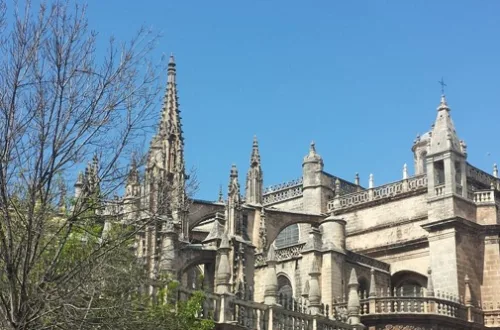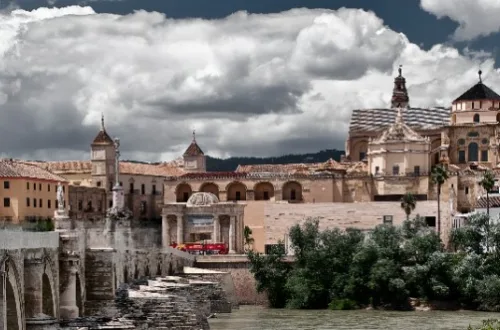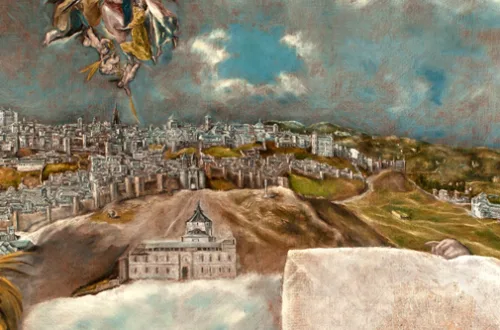
Brushstrokes of Andalusia: Exploring the Top 10 Art Museums in Seville
As the sun casts its golden hues over the cobblestoned streets, a city steeped in history awakens, ready to unveil its treasures. Andalusia, a region where the past and present dance in a harmonious ballet, is home to Seville, a city that has long been a crucible of artistic expression. Here, the air is thick with the scent of orange blossoms and the echoes of a rich cultural heritage that has given rise to some of the most exquisite art museums in Seville.
Seville’s art scene is as vibrant and varied as the patterns on traditional Andalusian tiles. It reflects a fusion of historical influences—from the Moors to the Castilians—each layer adding complexity and beauty to the city’s artistic identity. You can best appreciate this tapestry of time through its galleries and museums, where art tells the stories of epochs past and ignites the imagination with possibilities yet to come.
In this article, we embark on a curated journey through the top 10 art museums in Seville, where each establishment serves as a portal to different eras and aesthetics. Whether you’re an art aficionado or a curious traveler, these museums are not just destinations; they are experiences that promise to leave an indelible mark on your soul.
- 1. The Heart of Sevillian Art: Museo de Bellas Artes
- 2. Contemporary Pulse: Centro Andaluz de Arte Contemporáneo
- 3. A Noble Collection: Palacio de la Condesa de Lebrija
- 4. The Flamenco Touch: Museo del Baile Flamenco
- 5. The Fabric of Sevillian Artistry: Museo de Artes y Costumbres Populares
- 6. The Ecclesiastical Canvas: Hospital de la Caridad
- 7. The Innovator’s Space: Espacio Santa Clara
- 8. The Collector’s Dream: Casa de Pilatos
- 9. A Fusion of Cultures: Museo Pintor Amalio
- 10. Discovering Seville's Artistic and Nautical Splendor: Museo Naval Torre del Oro
- The Artistic Heart of Andalusia
1. The Heart of Sevillian Art: Museo de Bellas Artes
Nestled in the labyrinth of Seville’s charming streets stands a beacon of artistic heritage—the Museo de Bellas Artes. Housed in a former convent, its architectural splendor is a silent testament to the city’s historical grandeur. As one steps through its majestic arches, they travel into an era where art was both a devotion and a way of life. This museum is not just one of the many art museums in Seville; it is the very pulse of its artistic heart.
The walls of the Museo de Bellas Artes are lined with an impressive array of collections that span several centuries, offering a window into the soul of Andalusian artistry. Visitors are greeted by masterpieces from the Gothic period to the Baroque, with special attention given to the Golden Age of Sevillian painting. Notable works by Murillo, Zurbarán, and Valdés Leal demand admiration and contemplation, inviting onlookers to delve deep into the stories they tell.

The Fine art Museum in Seville and its stories
Amidst the silent conversations between art lovers and the hushed tones of awe, one might overhear anecdotes shared by the museum’s curators. Tales of a city that has always placed art at the forefront, or quotes from visitors who have found themselves lost in the beauty of a particular painting. The Museo de Bellas Artes is not just a stop on an itinerary; it is a journey through time and creativity, making it an essential experience for anyone seeking to discover the rich tapestry of art museums in Seville.

2. Contemporary Pulse: Centro Andaluz de Arte Contemporáneo
When one speaks of art museums in Seville, the Centro Andaluz de Arte Contemporáneo (CAAC) invariably stirs the conversation towards the avant-garde. This museum, a stark contrast to the ancient relics of the city, offers a refreshing gaze into the world of contemporary art set against the backdrop of Seville’s historical narrative. It is a place where the new artistic expressions are in constant dialogue with the echoes of the past.
The CAAC prides itself on showcasing a diverse range of modern artworks that challenge and inspire. Its dynamic exhibitions and innovative programs are carefully curated to reflect current artistic trends while fostering a discourse on societal issues. Visitors can expect to encounter anything from thought-provoking installations to groundbreaking multimedia presentations, making it a hub for contemporary creativity in Andalusia.

Reinvention and Heritage: CAAC’s Unique Place Among Art Museums in Seville
But the allure of the CAAC extends beyond its galleries. The very walls that house these modern masterpieces are steeped in history. Once a monastery, the building’s transformation into a modern art space is a story of reinvention and respect for heritage—a narrative that mirrors the evolution of Seville itself. This juxtaposition of old and new makes the Centro Andaluz de Arte Contemporáneo a compelling chapter in the story of art museums in Seville, inviting art lovers to witness a different facet of the city’s artistic soul.
A Modern Gaze: CAAC — Monasterio de la Cartuja
At the crossroads of past and present, the CAAC — Monasterio de la Cartuja stands as a bold expression within the realm of art museums in Seville. This center for contemporary art offers a striking contrast, setting cutting-edge exhibitions against the backdrop of a historic monastery. The juxtaposition is as thought-provoking as it is visually arresting, inviting visitors to contemplate the dialogue between the ancient and the avant-garde.
The repurposed monastery, with its silent cloisters and sacred halls, now resonates with the vibrant energy of modern creativity. The space itself becomes a canvas, where the minimalist lines of modern sculptures stand in conversation with the intricate arches and vaults of its historical architecture. This dynamic interplay is a hallmark of the CAAC, making it a pivotal destination for those tracing the evolution of art museums in Seville.
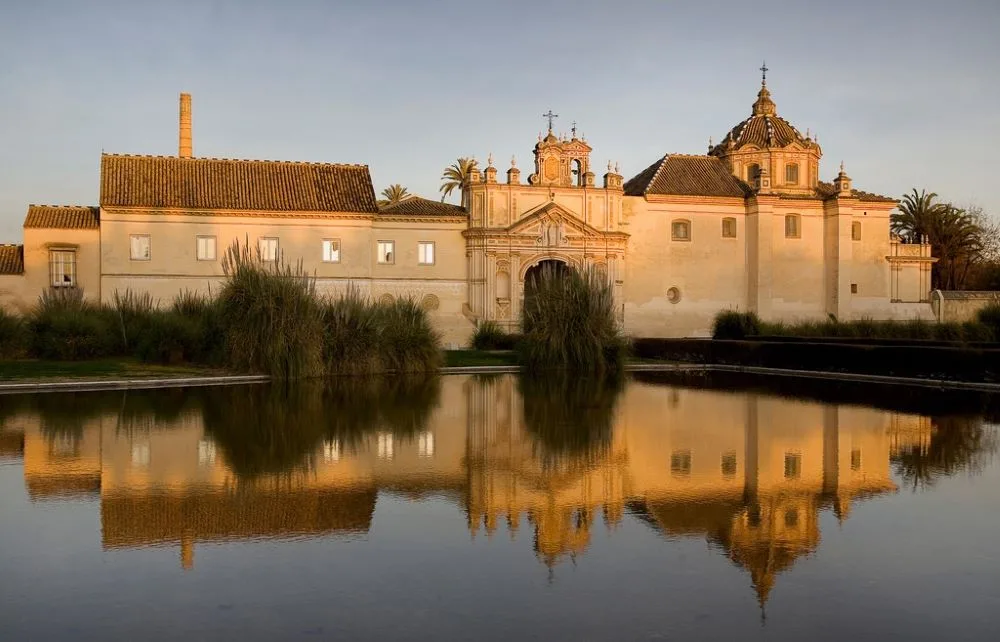
3. A Noble Collection: Palacio de la Condesa de Lebrija
In the heart of Seville, where the whispers of history blend seamlessly with the present, stands the Palacio de la Condesa de Lebrija. This palace-museum, often regarded as one of the most emblematic art museums in Seville, is an intimate trove of art and history. Within its walls, a private collection unfolds like the pages of a visual diary penned by nobility.
As visitors step across the threshold, they are greeted by an astonishing array of Roman mosaics, each piece telling a story of ancient times and distant lands. These intricate designs lay the foundation for a journey through time, leading onlookers to the opulent embrace of Renaissance art. The Palacio is a testament to the eclectic tastes of its namesake, the Countess of Lebrija, who meticulously integrated these works into her historic residence.
Palacio de la Condesa de Lebrija: A Testament to the Artistic Spirit of Art Museums in Seville
The collection extends beyond these time-honored pieces, encompassing a variety of unique artifacts that capture the imagination. Each room in the palace serves as a showcase, highlighting the seamless blend of different eras and styles. This harmonious fusion not only reflects the Countess’s vision, but also encapsulates the essence of Seville’s diverse artistic lineage.
A visit to the Palacio de la Condesa de Lebrija offers more than just a glimpse into the past; it is an immersive experience that enriches one’s understanding of why art museums in Seville are destinations unto themselves. Here, amidst the splendor of noble collections, the spirit of Seville’s artistry continues to thrive.
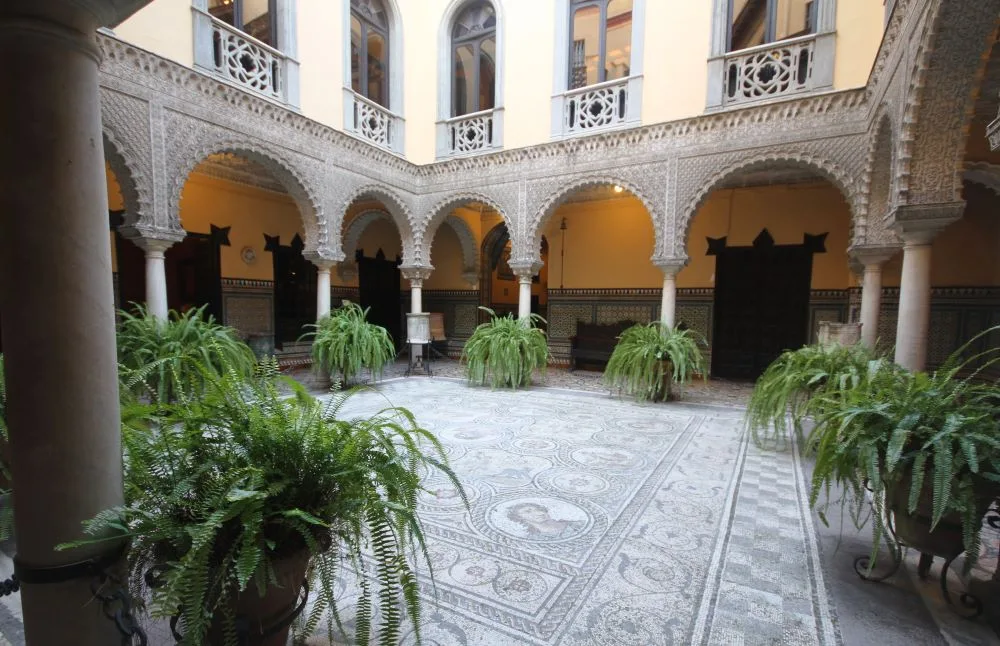
4. The Flamenco Touch: Museo del Baile Flamenco
In the vibrant tapestry of art museums in Seville, the Museo del Baile Flamenco stands out with a fiery passion that is as compelling as the art form it celebrates. This museum is not merely a space for silent admiration, but a pulsating heart that beats to the rhythm of castanets and the stomp of a bailaor’s feet. It is a dedication to flamenco, not just as a dance but as an art form that embodies the soul of Andalusia.
From the moment you enter the Museo del Baile Flamenco, you are enveloped in an atmosphere that is both electric and intimate. Exhibits unravel the history and evolution of flamenco, showcasing the costumes, guitars, and personal stories that have shaped this cultural phenomenon. The museum doesn’t just preserve tradition; it brings it to life, offering visitors the unique opportunity to experience flamenco in its birthplace.
Live Art in Motion: The Museo del Baile Flamenco Elevates Art Museums in Seville with Authentic Performances
To truly understand the depth and fervor of flamenco, one must witness it in motion. The museum extends an invitation to embrace this experience through live performances that are as enchanting as they are authentic. These shows are not just displays; they are the very essence of flamenco, shared with an audience in an intimate setting that transcends the typical museum visit.
The Museo del Baile Flamenco is a vivid chapter in the narrative of art museums in Seville—a place where the art of flamenco dances off the walls and into the hearts of those who come to witness its beauty. A visit here promises not just an exhibition, but a performance that will leave you with a profound appreciation for an art form that is quintessentially Sevillian.

5. The Fabric of Sevillian Artistry: Museo de Artes y Costumbres Populares
Woven into the cultural mosaic of art museums in Seville, the Museo de Artes y Costumbres Populares serves as a guardian of the region’s folk art and traditions. This museum is a celebration of the Andalusian spirit, captured through the skilled hands of local artisans, whose crafts tell the story of a rich and vibrant heritage.
Upon entering, visitors are greeted by a diverse collection that spans the spectrum of Sevillian craftsmanship. From intricately embroidered textiles to delicate ceramics and ironwork, each exhibit is a testament to the traditional techniques passed down through generations. The museum not only displays these artifacts, but also contextualizes them within the daily lives and customs of the people who created them, offering a profound insight into the local culture.
Threads of Tradition: a Cornerstone Among Art Museums in Seville
One of the highlights is the collection of traditional Sevillian costumes, which showcases the evolution of local fashion and the meticulous attention to detail characteristic of Sevillian seamstresses. Another is the array of domestic tools and implements that may seem mundane at first glance but are, in fact, rich with stories and significance, illustrating the ingenuity and resourcefulness of past generations.
The Museo de Artes y Costumbres Populares stands as a vital institution among art museums in Seville, dedicated to preserving the threads that make up the fabric of Sevillian identity. For those who seek to understand the true essence of Seville, a visit to this museum is an enlightening journey into the heart of its artistic and cultural legacy.
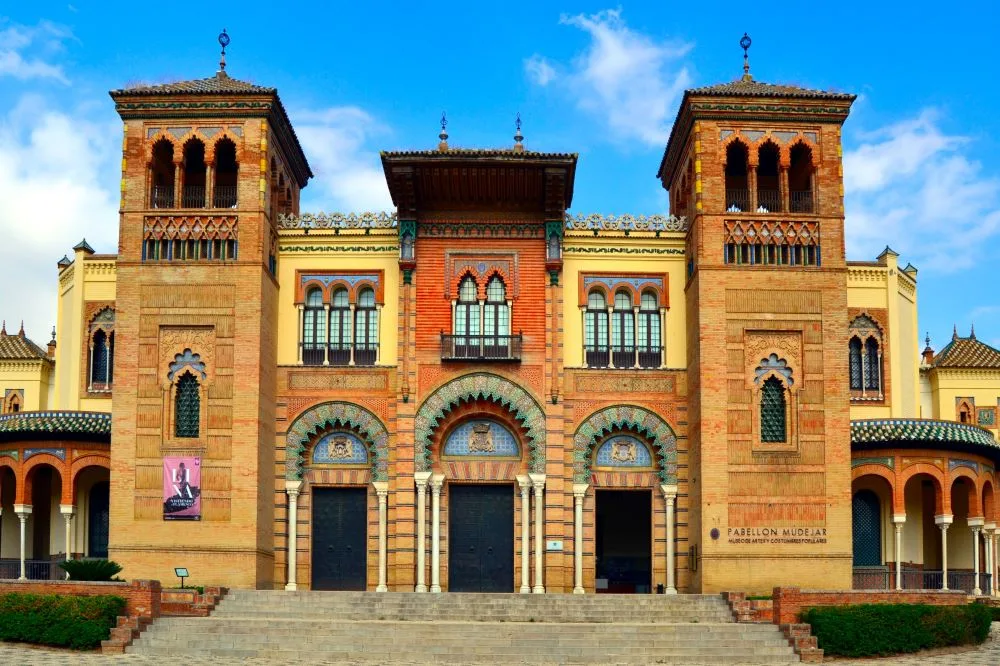
6. The Ecclesiastical Canvas: Hospital de la Caridad
Nestled within the historic heart of the city, the Hospital de la Caridad offers a unique perspective on art museums in Seville. This institution, born from a vow to charity and compassion, has transcended its altruistic origins to become a repository of some of the most divine religious artwork in Spain. Its walls, which have provided solace to the needy, now also safeguard a stunning collection that chronicles tales of faith and benevolence.
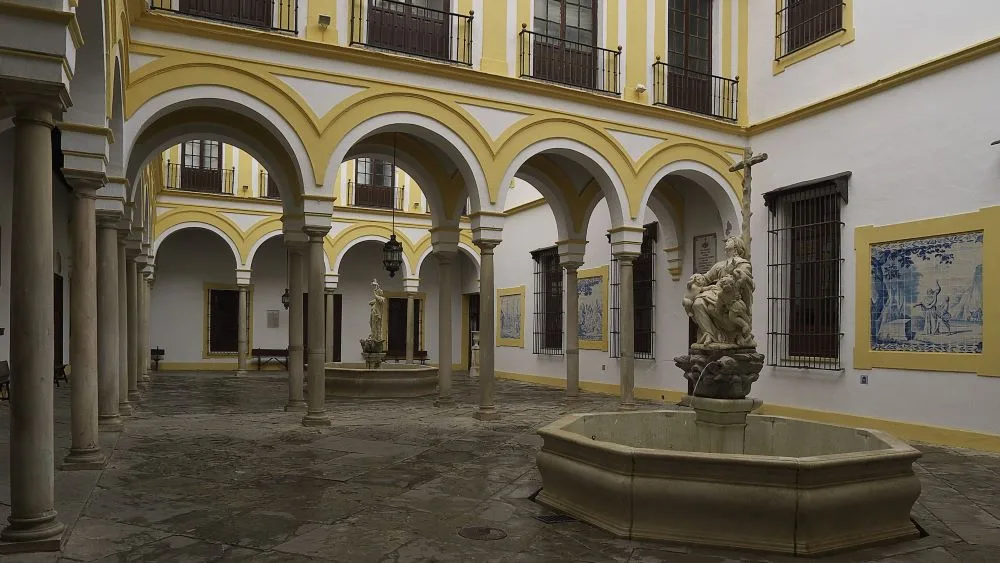
Murillo’s Legacy: Among the Spiritual Art Museums in Seville
The hospital’s corridors and chapels are adorned with masterpieces that serve as a testament to its charitable history. Visitors are often awestruck by the sheer beauty of the paintings and sculptures that encompass the sacred and the artistic. Among these treasures are significant works by the revered Spanish painter Murillo, whose canvases are imbued with the light of divine grace and human kindness.
Murillo’s contributions to the Hospital de la Caridad are not merely artistic; they are woven into the very ethos of the institution. His depictions of saintly figures and biblical narratives invite contemplation and reflection, resonating with the hospital’s mission to heal both body and soul.
As one of the more spiritually inclined art museums in Seville, the Hospital de la Caridad provides an experience that is as enriching to the spirit as it is pleasing to the eye. It stands as a beacon of Sevillian art and philanthropy, where history, charity, and art converge in a serene symphony that has echoed through the ages.
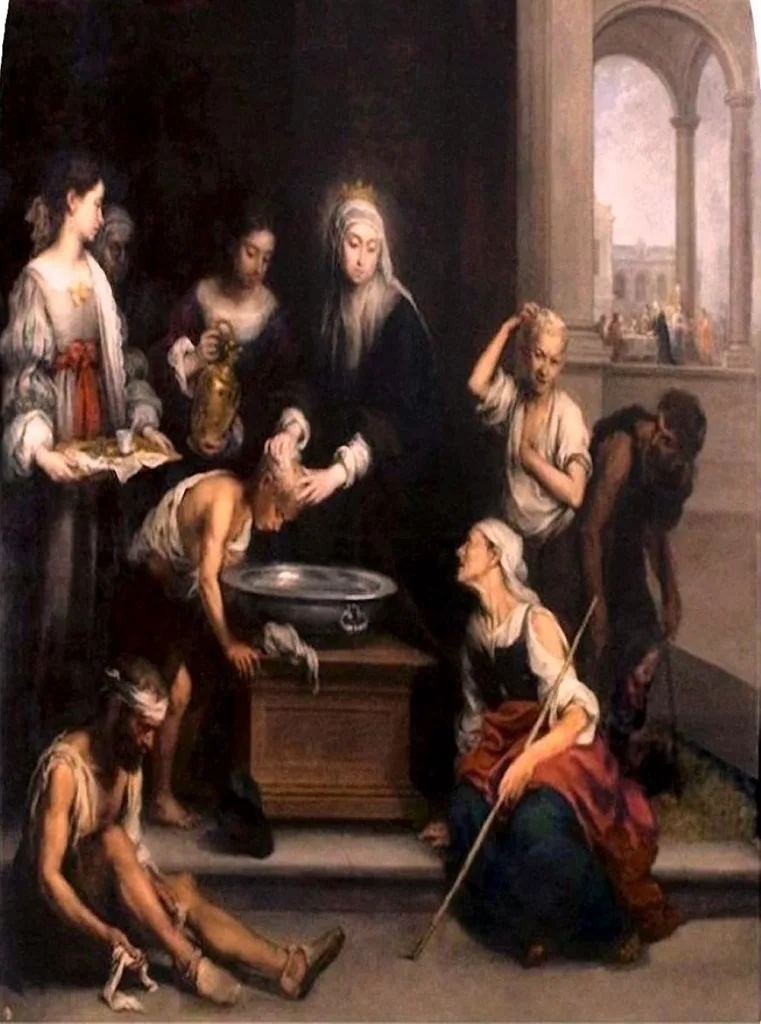
7. The Innovator’s Space: Espacio Santa Clara
Among the constellation of art museums in Seville, Espacio Santa Clara emerges as a lesser-known gem that shines with a distinct light. This venue is a beacon for aficionados of the avant-garde, consistently hosting exhibitions that push boundaries and challenge conventions. It’s a space where innovation is not just welcomed but celebrated, making it a must-visit for those seeking the pulse of contemporary artistic expression in Seville.
Espacio Santa Clara’s history as a convent adds layers of depth to its current incarnation. The serene halls that once echoed with the contemplative prayers of nuns now resonate with the dynamic energy of cutting-edge art. The transformation from a place of spiritual seeking to a hub of cultural significance is a story written into the very fabric of the building, offering visitors a unique narrative that intertwines the sacred with the progressive.
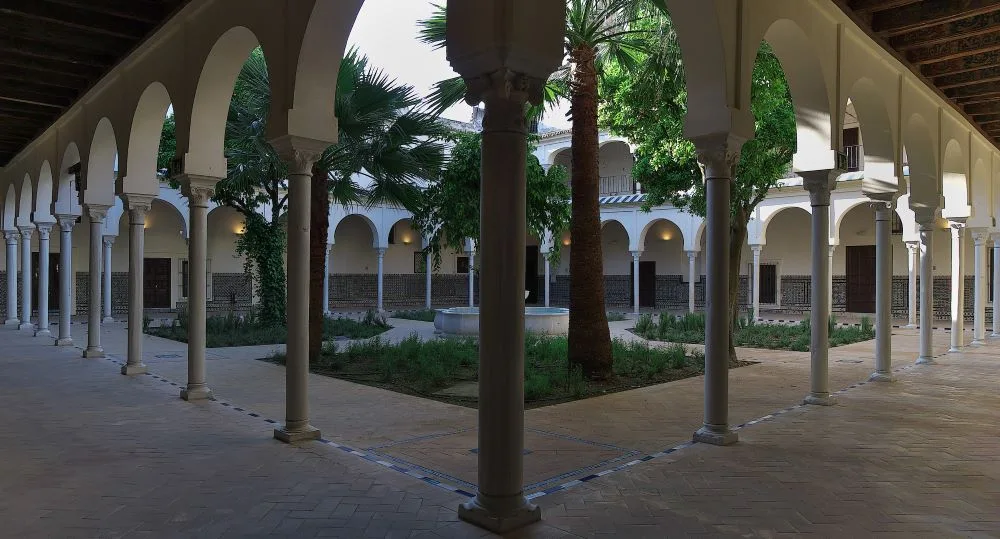
Espacio Santa Clara: A Fusion of History and Innovation at the Forefront of Art Museums in Seville
The venue’s commitment to showcasing avant-garde exhibitions means that it is always at the forefront of introducing new ideas and artists to the cultural tapestry of Seville. Each room and cloister within Espacio Santa Clara has been reimagined as a stage for creative dialogue, where history’s whispers meet the modern world’s bold declarations.
As an integral part of the network of art museums in Seville, Espacio Santa Clara stands out for its dedication to the new without losing sight of its past. It represents a cultural pilgrimage site for those drawn to where history and innovation converge, offering an experience that is as enlightening as it is inspiring.
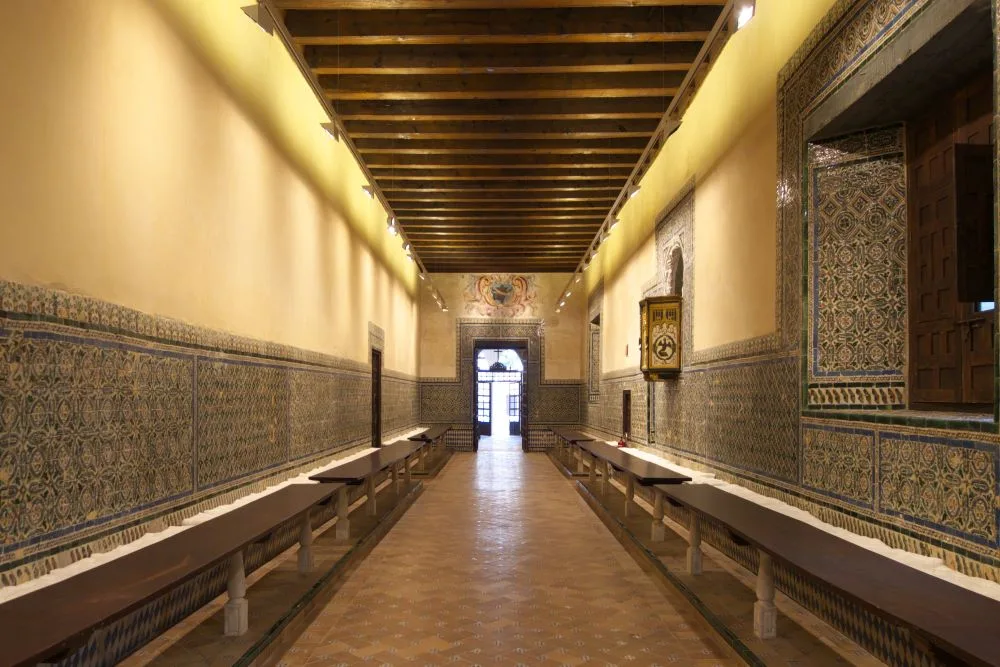
8. The Collector’s Dream: Casa de Pilatos
A jewel in the crown of art museums in Seville, Casa de Pilatos offers an intimate glimpse into the grandeur of a private collection set within an Andalusian palace. This historic residence, with its lush courtyards and elaborate mosaics, stands as a testament to the city’s love affair with fine art and exquisite architecture.
As you wander through the rooms of Casa de Pilatos, you are transported into the world of the collector’s dream. The palace’s art collection is as diverse as it is impressive, featuring Renaissance masterpieces, precious sculptures, and vibrant frescoes. Each piece seems perfectly at home against the backdrop of intricate stonework and ornate tiling that is characteristic of this palatial abode.
Artistic Harmony at Casa de Pilatos: A Jewel Among Art Museums in Seville
The architectural features of Casa de Pilatos are not merely a setting, but a complement to the artworks themselves. The harmonious blend of Mudéjar craftsmanship and Renaissance influences creates a visual symphony that enhances the beauty of the collection. Arched doorways frame each piece, while sun-dappled patios offer a moment of reflection, allowing the art to be fully appreciated in its historical context.
Casa de Pilatos is more than just a home for art; it is a living piece of history and a highlight among the art museums in Seville. It invites art lovers to not only observe but also to feel the essence of a bygone era where beauty and culture were revered above all else. For those seeking an artistic pilgrimage, Casa de Pilatos promises a dream made manifest in stone and canvas.
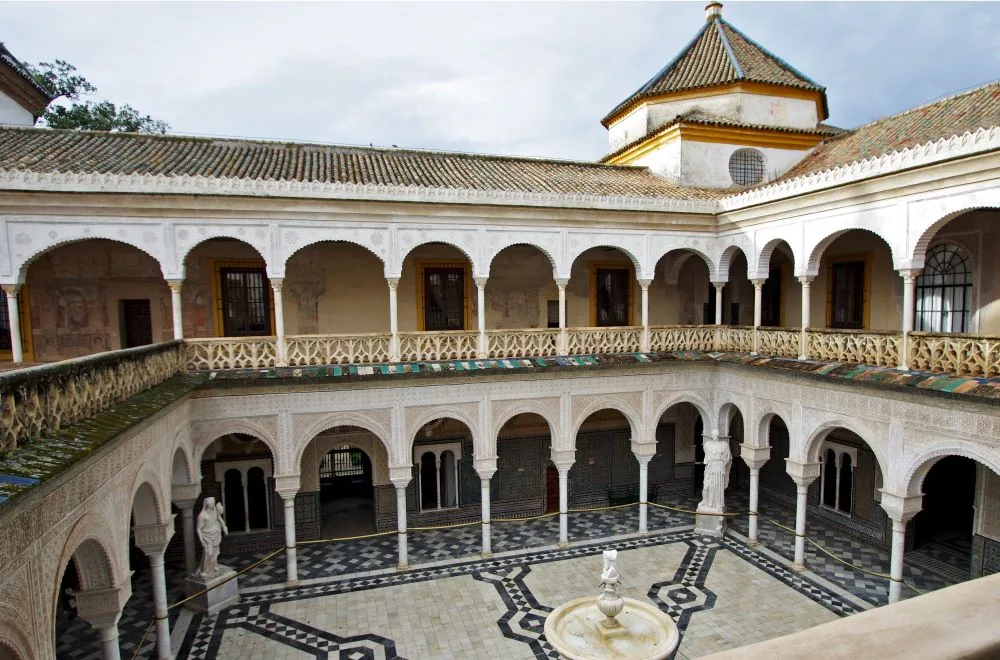
9. A Fusion of Cultures: Museo Pintor Amalio
In the rich tapestry of art museums in Seville, the Museo Pintor Amalio stands out as a vibrant thread that weaves together the essence of the city’s cultural heritage. Dedicated to the illustrious Sevillian painter Amalio García del Moral, this museum is home to a remarkable collection, including his famed series of 365 paintings of the Giralda, offering a daily homage to the iconic tower that defines Seville’s skyline.
Each painting is a narrative, capturing the Giralda in different shades of light and seasonal transformations, revealing Amalio’s deep connection with his muse. This dedication to a single subject over the course of a year is a testament to the artist’s enduring influence and legacy in Seville. His work not only reflects the city’s architectural beauty but also its ever-changing moods and atmospheres.

Amalio’s Vision: Celebrating Seville’s Cultural Tapestry at the Museo Pintor Amalio, a Distinctive Art Museum in Seville
Amalio’s palette was as diverse as the cultures that have shaped Seville. His brush strokes tell stories of a city where East meets West, where Gothic and Baroque nuances blend seamlessly with Islamic artistry. The Museo Pintor Amalio is more than just an art space; it is a celebration of Seville’s historical crossroads and the artistic expression it has inspired.
As visitors explore the museum, they are not just walking through another one of the art museums in Seville; they are embarking on a journey through time and creativity. The museum immortalizes Amalio’s vision, making his personal quest to capture the Giralda a shared experience for all who walk its halls.
The legacy of Amalio García del Moral continues to resonate within the city, as his paintings are a constant reminder of Seville’s mesmerizing allure. The Museo Pintor Amalio invites art lovers and cultural explorers alike to witness the fusion of cultures that is as unique and captivating as Seville itself.
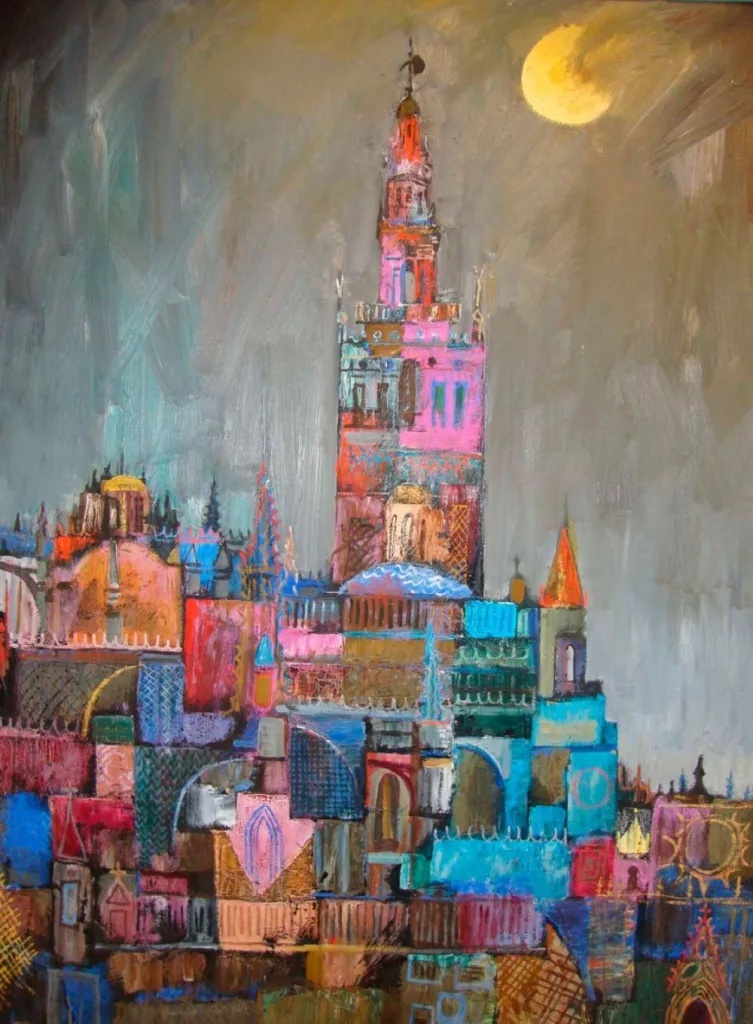
10. Discovering Seville’s Artistic and Nautical Splendor: Museo Naval Torre del Oro
Nestled on the banks of the Guadalquivir River, the Museo Naval Torre del Oro offers a unique glimpse into Spain’s maritime past, standing out as a distinctive presence among the art museums in Seville. This historic tower, a symbol of Seville’s rich naval heritage, invites art and history enthusiasts to delve into its storied chambers where tales of exploration and conquest come to life.
As one of the premier art museums in Seville dedicated to naval history, the Museo Naval Torre del Oro encapsulates the spirit of adventure that once propelled Spain’s ships across uncharted seas. Visitors are transported back in time through meticulously preserved artifacts, each telling a story of the city’s illustrious maritime era.
The Museo Naval Torre del Oro’s collection is curated to engage those who seek more than just the traditional art experience offered by other art museums in Seville. From ancient navigational instruments to detailed ship models, each exhibit is a testament to the ingenuity and bravery of seafarers who shaped Spain’s destiny.
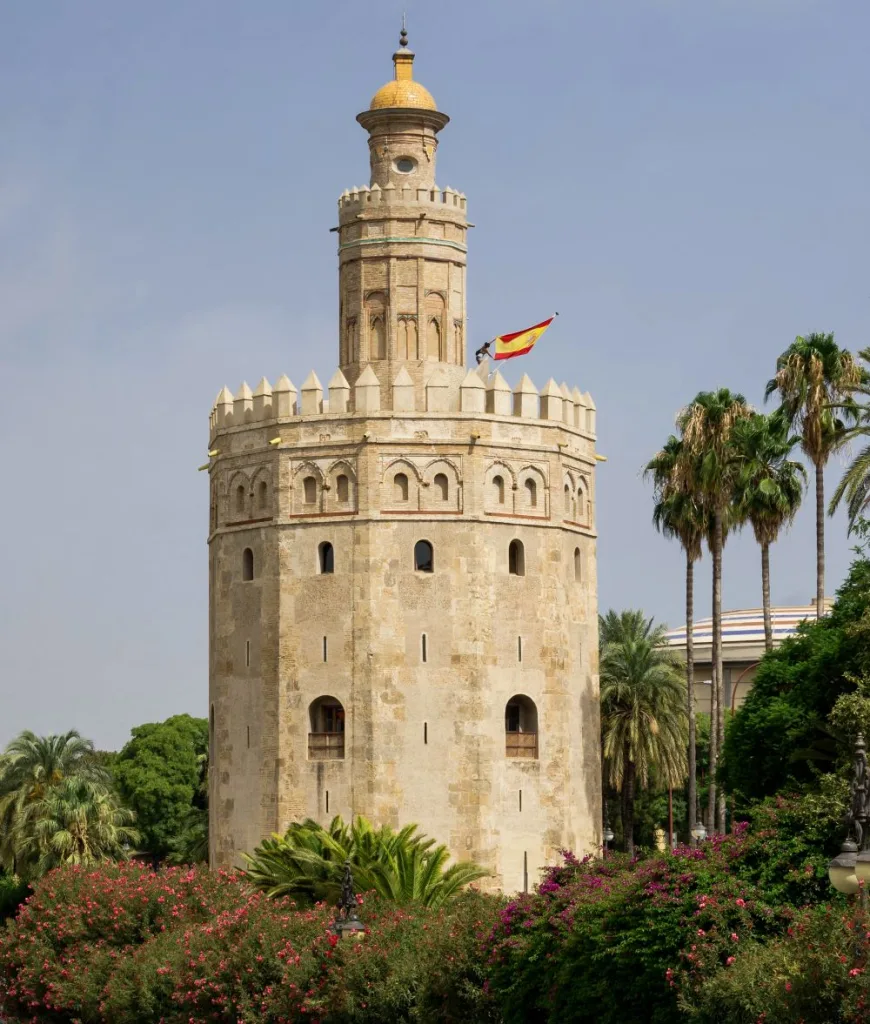
Embracing Seville’s Nautical Artistry: Museo Naval Torre del Oro as a Highlight Among Art Museums in Seville
While Seville is renowned for its vibrant art scene, the Museo Naval Torre del Oro provides a unique narrative that complements the city’s array of art museums. The museum’s exhibits, such as Renaissance-era cannons and romantic 19th-century Cartuja tiles, are not only artifacts but also pieces of art that narrate the maritime history of Seville.
When planning a cultural itinerary in Seville, the Museo Naval Torre del Oro is an essential stop for those looking to enrich their understanding of Spain’s nautical heritage. It stands as a beacon among art museums in Seville for those who appreciate the artistry in history.
With its affordable entry fee and the special allure of free admission on Mondays, this museum offers both accessibility and a deep dive into one of the most fascinating aspects of Seville’s past. Remember, due to its intimate size, it’s wise to plan ahead as the museum limits its visitors to ensure a personal and reflective experience.
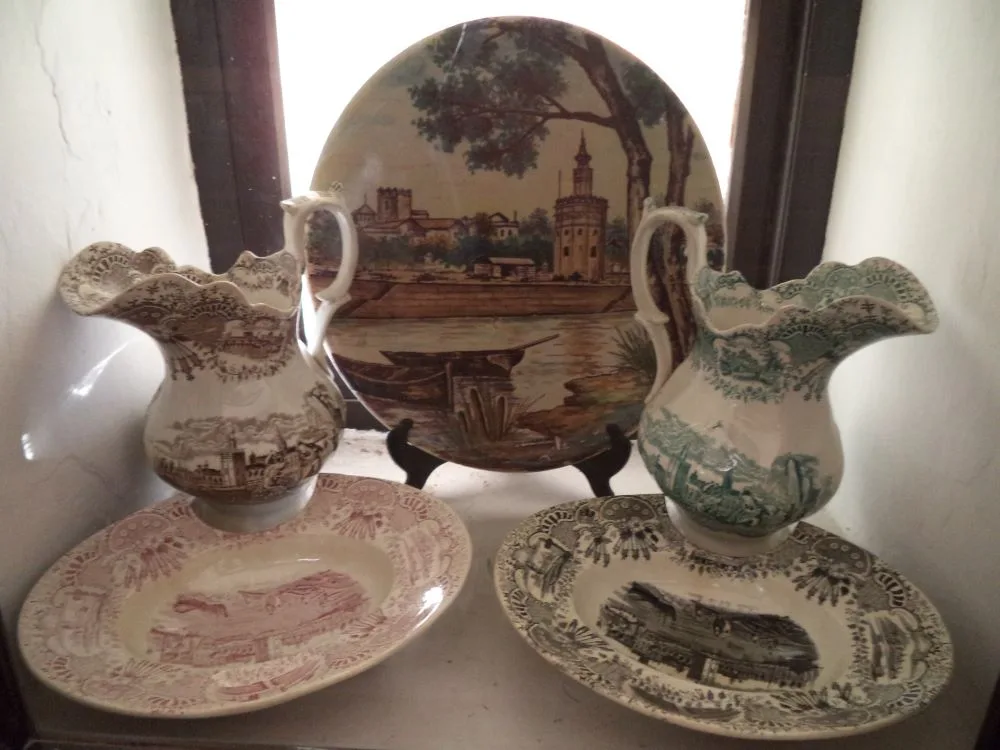
The Artistic Heart of Andalusia
Our journey through the art museums in Seville has been a vivid exploration of color, history, and culture. Each museum is a chapter in the larger story of Andalusia, a narrative woven with the threads of diverse civilizations and their artistic expressions. From the ancient walls of the Monasterio de la Cartuja to the intimate galleries of Museo Pintor Amalio, these spaces collectively form a mosaic as intricate and captivating as the region’s famed azulejos.
The importance of these cultural institutions lies not just in their splendid collections, but in their ability to convey the essence of Andalusian culture. They are guardians of heritage, each painting, sculpture, and mosaic piece a testament to the rich tapestry that is Seville’s history. To wander through these halls is to walk in the footsteps of artists, patrons, and visionaries who have all shaped the city’s artistic legacy.
To fully appreciate Seville’s artistic heritage, one must step beyond the sun-drenched streets and into the cool reprieve of its museums. Here, amidst the quiet contemplation of art, the soul of Seville reveals itself. The art museums in Seville are not just destinations; they are experiences that beckon to be explored, promising insights not only into the works they house but into the very heart of Andalusia itself.


